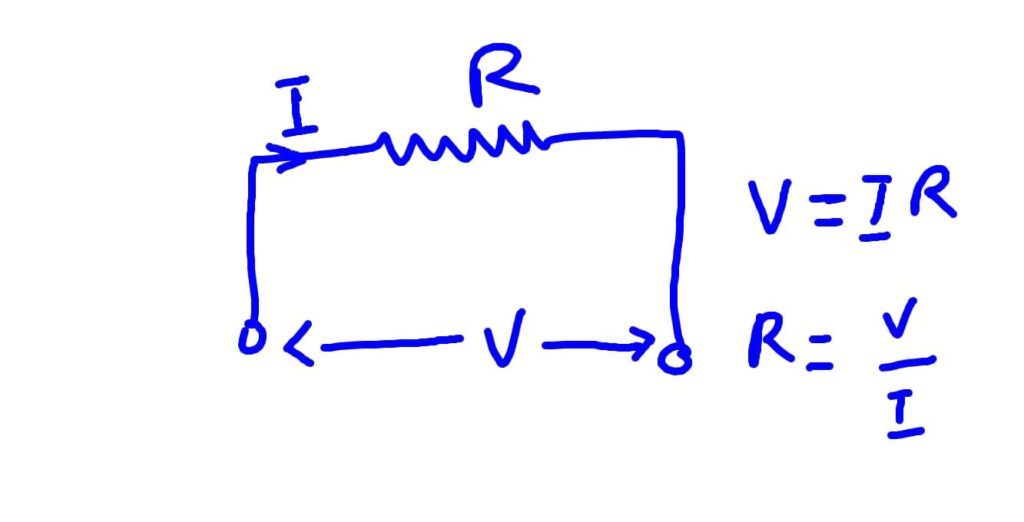Resistance:
Electrical resistance or simply resistance is the property of materiel which opposes flow of electrons. The unit of resistance is Ohms “Ω” and Resistance is denoted by ‘R”.
Resistance between two ends or two point of material depends upon its length, its cross sectional area and type of material. Resistance is directly proportional to length and inversely proportional to area of cross section (A)
R ∝ L here R is resistance and ‘L’ is the length of the conductor.
R ∝ 1/A so,
R ∝ L/A, the constant of proportionality is called as “Resistivity” and is denoted by ‘ρ’ (rho)
R = ρL/A
Resistivity ‘ρ’ is constant for a particular type of material at a given temperature. From the above equation we can derive ρ as
ρ = RA/L => (Ohm * Square meter) / meter => Ohm-meter
So the unit of resistivity is Ohm-meter.
Resistivity of Silver is 1.50 X 10-8 Ohm-meter (Ω·m), for copper this is 1.68 x 10-8 ohm-meters (Ω·m), and for Aluminium value is 2.6 X 10-8 Ohm-meter (Ω·m).
Electric Conductors and Insulators:
Electric Conductors are materials with low resistivity and which allows current to pass through them.
From the above Resistivity values silver is having less resistivity followed by copper and Aluminium. This shows silver is best conductor of electricity, and Copper and then Aluminium. As the cost of silver is high electrical wires are made of Copper and Aluminium.
Insulators are materials with very high resistivity and does not allow current passing through them.
Resistivity value of rubber is in the range of 1013 which is very high. This is why these materials are used as insulating materials to prevent electric shock, as they do not allow electric current to pass through rubber.. Technicians working on electrical equipment use shoes and gloves made of materials like rubber having high resistivity.
Ohm’s Law:
Ohm’s law defines the relation between Current (I) flowing through between two points of conductor, and Voltage or potential difference(V) between those two points.
Voltage (R) between two points is directly proportional to current (I) flowing through it, the constant of proportionality is know as resistance (R)
V ∝ I ==> ‘V’ is voltage across two points and ‘I’ is the current flowing through it.
V = IR ==> ‘R’ is the resistance between two points.
R = V/I and I = V/R

